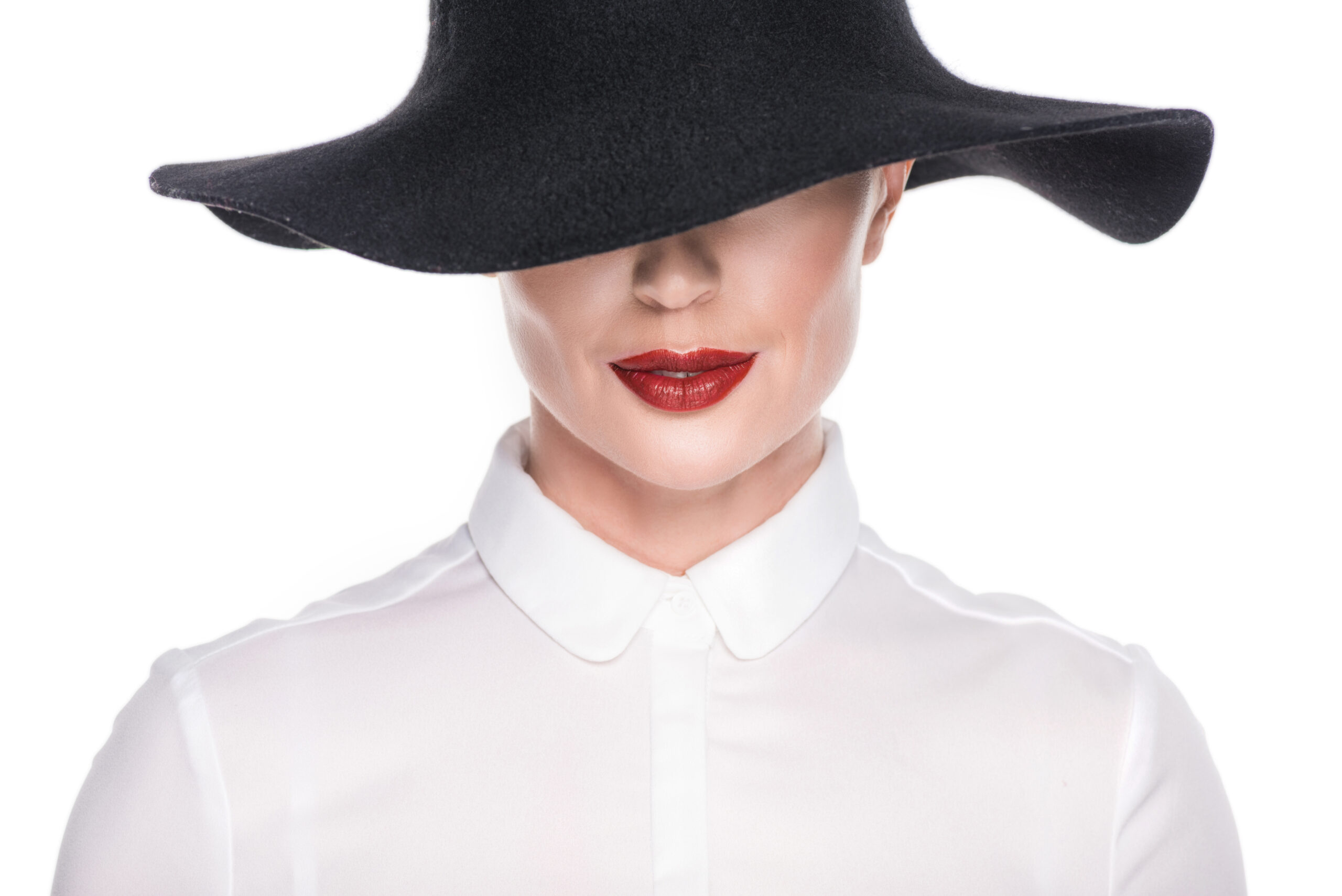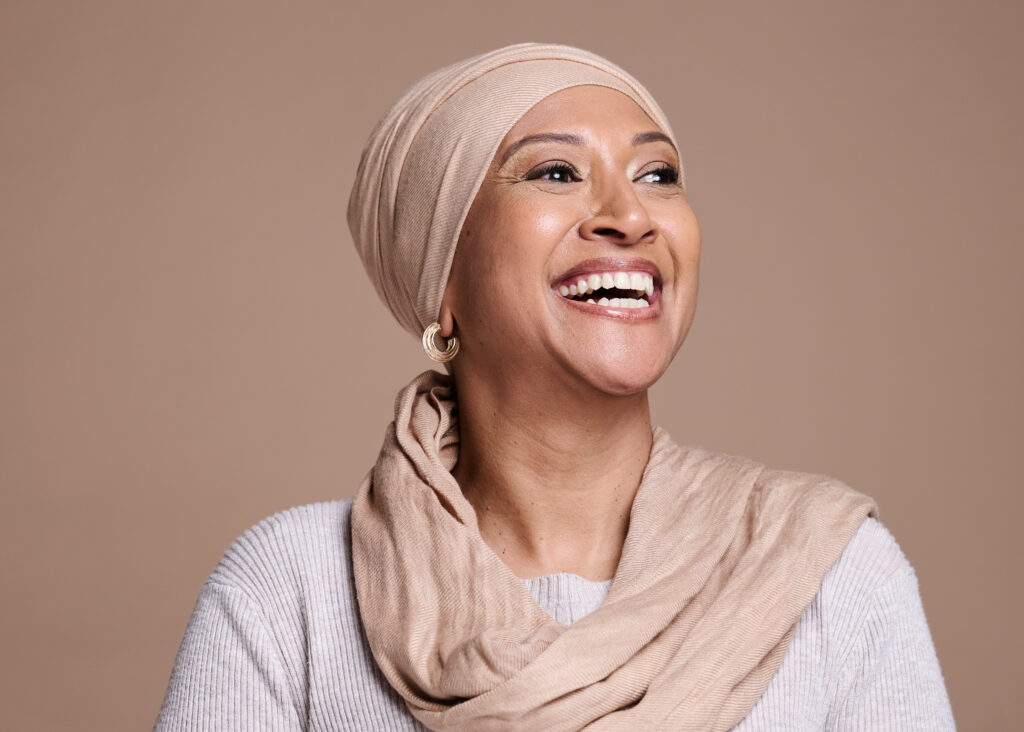Facing chemotherapy and its side effects, particularly hair loss, can be a challenging journey for many. While the physical aspects of hair loss are often discussed, the emotional impact is profound, affecting self-esteem and identity. This guide offers practical, stylish, and sensitive options for head scarves and hats for empowering those undergoing treatment to feel confident and covered.
Understanding Hair Loss Due to Chemotherapy
Chemotherapy attacks rapidly dividing cancer cells but also affects other dividing cells, like hair follicles, leading to hair loss. This often begins within a few weeks of starting treatment. Being prepared and understanding this aspect can help mitigate some of the emotional impacts.
Read more: How to cope with hair loss from Chemotherapy
Choosing the Right Headscarf
When undergoing chemotherapy, the right headscarf can provide both comfort and a sense of personal style. Here's a deeper look into selecting the perfect headscarf, focusing on materials, styles, and patterns:
Materials
The choice of material is crucial as it directly touches the scalp, which can become particularly sensitive during chemotherapy. Here are some of the best materials for headscarves:
- Bamboo: This material is exceptionally soft and gentle on the skin, making it ideal for sensitive scalps. Bamboo is also thermoregulating, meaning it stays cool in summer and warm in winter, providing comfort in any weather. Additionally, bamboo has natural moisture-wicking properties that help keep the scalp dry, reducing the risk of irritation.
- Cotton: Known for its softness and breathability, cotton is a hypoallergenic option that is gentle on the skin. It's highly absorbent, which helps manage sweat, and it's easy to wash and care for. Opt for organic cotton if possible, as it's typically produced without the use of harsh chemicals, making it even better for sensitive skin.
- Silk: Silk is luxurious and extremely gentle, providing a smooth surface that minimizes friction against the scalp. This can be particularly beneficial for those with very sensitive skin. Silk also has natural temperature-regulating properties, making it comfortable to wear year-round. While silk can be more expensive and may require more careful washing, its benefits for sensitive scalps are significant.
Styles
The way a headscarf is tied can affect both its comfort and its look. Here are a few styles that are popular among chemo patients, each offering a different aesthetic:
- Simple Knot: This is the easiest style to achieve. The scarf is draped over the head with the ends pulled to the nape of the neck, tied in a simple knot. This style is quick, easy, and functional, providing good coverage and security.
- Turban Wrap: More elaborate, this style involves wrapping the scarf around the head several times, creating layers that add volume and style. This can be a fashionable choice that also offers excellent coverage. Online tutorials can be extremely helpful in mastering this style.
- Rosette Wrap: This involves twisting and wrapping the scarf to create a rosette-like shape at the front or side of the head. It's a stylish option that adds a decorative touch and can be particularly uplifting for special occasions.
Patterns and Colors
The choice of pattern and color is deeply personal and can play a significant role in lifting spirits during chemotherapy:
- Colors: Bright and bold colors can be uplifting and transformative to the wearer's mood. Soft pastels may offer a soothing effect, while neutrals are versatile and easy to match with different outfits.
- Patterns: Patterns can range from subtle to bold. Floral and paisley patterns can add a feminine touch, geometric patterns give a modern look, while abstract or artistic prints can express creativity and personality.

Hats for Chemo Patients
For many undergoing chemotherapy, hats are a preferred alternative to scarves due to their ease of use and variety of styles. Let's delve deeper into the types of hats suitable for chemo patients, the best materials, and how to ensure a good fit for comfort and security.
Types of Hats
Hats offer versatility in style and practicality, accommodating various personal tastes and environmental needs. Here are some popular options:
- Beanies: Often made from soft, stretchable fabrics, beanies are a popular choice for their simplicity and snug fit. They can be worn year-round and come in a variety of materials and colors. For indoor wear or during cooler weather, a beanie can provide warmth without causing overheating.
- Berets: Offering a touch of classic style, berets are lightweight and less constricting than other hat types. They can be styled in multiple ways, allowing them to sit loosely on the head or be tilted at an angle for a more fashionable look. Berets made from soft wool or cotton blends are excellent for sensitive skin.
- Sun Hats: Ideal for outdoor protection, sun hats with wide brims provide excellent coverage against the sun's harmful rays, which is crucial as chemotherapy can make skin more sensitive to sunlight. Materials like canvas, straw, or lightweight synthetic fibers are common, but ensure the inside of the hat is lined with a soft, breathable fabric to avoid irritation.
- Cloche Hats: These hats fit closer to the head and can be both stylish and comforting. They often come in soft fabrics like felt or wool blends, offering good coverage and warmth, especially in cooler climates.
Material Considerations
Choosing the right material is as important in hats as in scarves:
- Cotton and Cotton Blends: These materials are soft, breathable, and easy to clean, making them ideal for everyday wear. Cotton is gentle on the skin and provides good absorbency for warmer days.
- Bamboo Fibers: Known for their softness and antibacterial properties, bamboo hats are increasingly popular among chemo patients. They are an excellent choice for those with very sensitive skin or who are prone to allergies.
- Soft Wool: For cooler weather, soft wool can provide warmth without itching or irritating the skin. Look for hats that are specifically labeled as soft or merino wool to ensure comfort.
Fit and Comfort
Ensuring a proper fit is crucial for maintaining comfort and confidence:
- Snug but Not Tight: A hat should fit securely on your head without slipping, but it shouldn't be so tight that it causes pressure or discomfort. An overly tight hat can lead to headaches and scalp pain.
- Adjustable Features: Some hats come with adjustable bands inside, which can help achieve a better fit, especially useful as the size of the head may change slightly due to hair loss.
- Lining: Opt for hats with a soft lining, especially if the outer material is not as gentle. Linings can provide additional comfort and protection, making the hat more pleasant to wear throughout the day.
The good thing with hats is that they can also be paired with wigs if you want to go for that direction too.
Read more: How to Choose A Wig After Chemotherapy
Selecting head scarves and hats during chemotherapy is more than a mere fashion choice; it's about comfort, expressing identity, and navigating a significant life challenge with grace. This guide aims to empower you to find options that reflect your style and meet your needs during this time. Feel encouraged to experiment with different styles and find what makes you feel best. Remember, each choice is a step toward reclaiming your confidence and comfort during your treatment journey.
Front Room Underfashions also offer different types of caps, scarves, sleep caps, and hats. Send us a message if you’re interested to know more!
